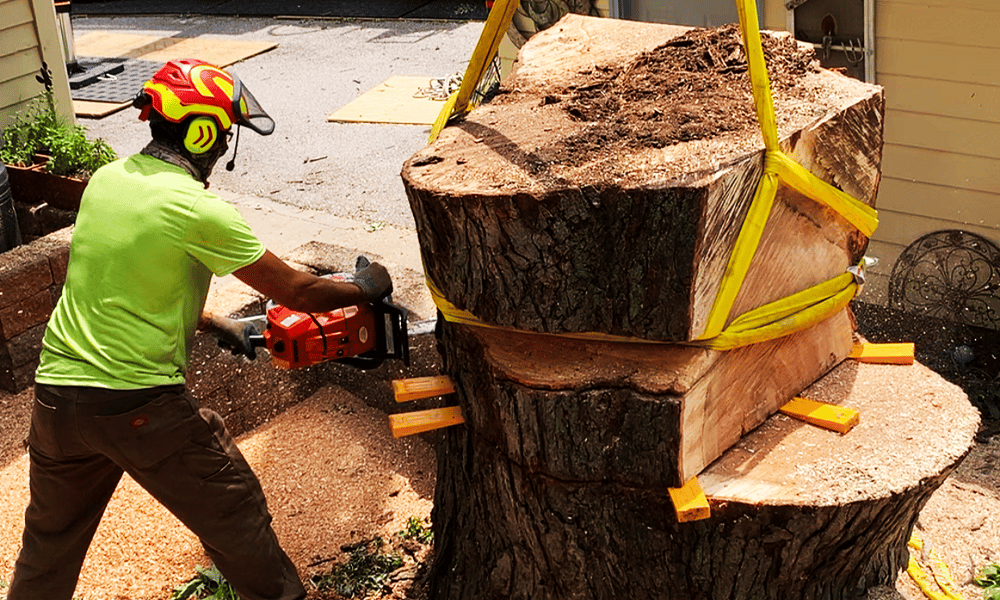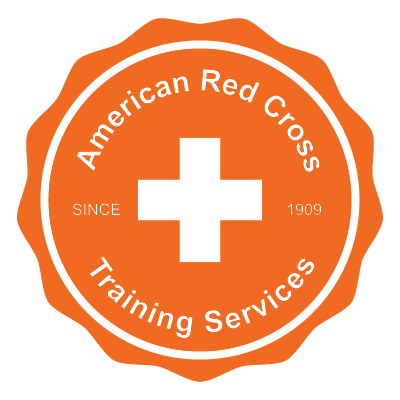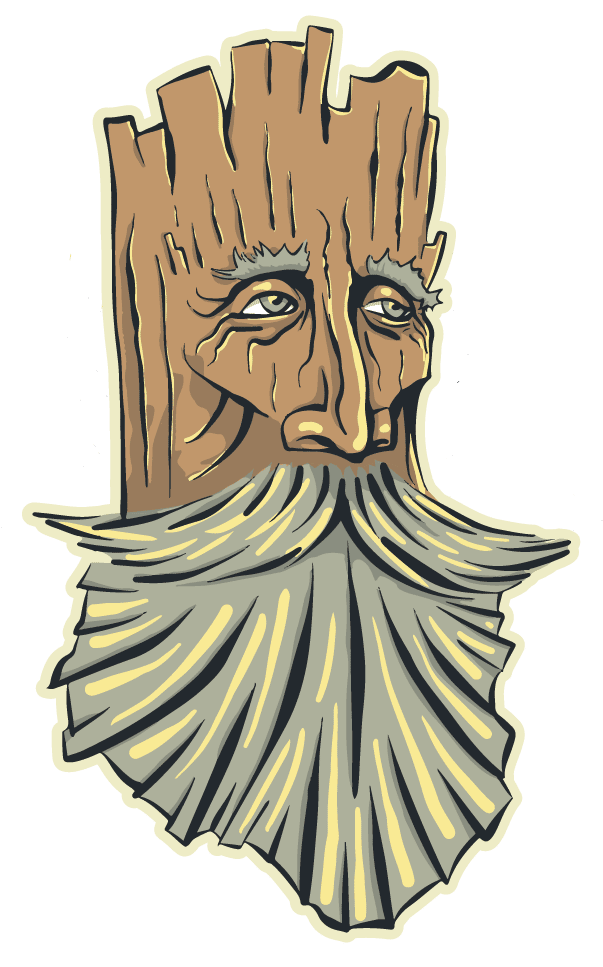Got Tree Questions?! We’re Always Here to Help!
25+ years of experience, countless skills workshops, training programs, certifications and becoming official Arborists means that we have a lot of tree knowledge to share. Here are some of the common questions we get from clients like you.
When Do I Know I Need Professional Service?
What are the different costs associated with tree trimming services?
Tree trimming is a necessary part of keeping your trees healthy and thriving. Trimming will also make the tree more aesthetically pleasing. There are many factors that determine tree trimming costs. Let’s dig a little deeper into this.
- Number of trees
- Size of your tree
- Tree species
- Potential obstacles (like power lines)
- If you would like us to haul away the branches as well
- How easy or difficult it will be for our equipment to access your trees
How do you safely cut tree limbs that are hanging over my home?
Overhanging tree limbs can cause serious damage to a home’s roof and property as a whole. Branches that extend above your roof are capable of causing serious damage to your home and your family. Trying to DIY with YouTube videos is a serious risk we would NEVER advise. A wrong cut could cause the branches to fall, requiring significant repairs to your roof or landscaping. You could also accidentally hurt yourself or someone you love.
We have state of the art equipment designed to safely reach the branches over your home and cut them while also securing them from falling. If our equipment can reach your trees and they aren’t too far within a fence line then we’ll always go that route.
If our equipment can’t reach then we will use professional tree climbing equipment and a trained professional who will climb your tree, secure the branches, and then cut them without allowing them to free fall to the ground or on your home.
Do You Have Tree Limbs Hanging Over Your Home?
Watch as we safely remove these tree limbs with our state of the art equipment.
I have a tree limb laying on my roof after a storm. Can your team help?
Yes, we can help. When a tree or limb falls on your roof after a storm, it’s always better to act quickly and have it removed as soon as possible so you can repair any damage quickly.
Call us at 402.960.6259 and our team of fully insured and certified 24/7 storm damage cleanup professionals will use our experience, skills, and state-of-the-art equipment to clean up and remove hazardous tree limbs from your roof or other areas efficiently and safely.
Why is tree trimming so important?
The practice of periodic tree trimming plays an important role in keeping trees healthy and extending their lifespan.
Well-maintained trees also elevate the appearance and value of your property, and regular tree trimming is a must to keep it looking good.
Think of tree trimming as a well-deserved haircut, creating a more aesthetically pleasing shape for the tree. When not properly trimmed, trees can grow to look lopsided, tilted, twisted, and bedraggled. Thinning out limbs and cutting back unwieldy branches gives a tree a more attractive appearance.
Regular tree trimming is also important because overgrowth can negatively impact a tree’s health. In the absence of trimming, trees are likely to become weaker, less resilient, and become dangerous for you and your family.
What is the difference between tree trimming and tree pruning?
It is easy to confuse tree trimming and tree pruning as both involve cutting away portions of the tree. In reality, the terms are used to describe processes with distinctly different objectives.
Tree pruning involves cutting away dead wood or diseased branches and pruning stems and branches to make the tree healthier and more attractive.
Tree trimming, on the other hand, involves removing excess growth in order to make the tree look better and be more functional for you and your family.
In simplest terms, tree pruning is primarily performed for health reasons, while trimming is done mainly for appearance and functionality.
What is the best time of year to do tree trimming?
The best time for tree trimming is typically late winter and early spring. Getting this job done before the weather warms is extremely important to minimize disruptions to new growth. Late-winter, early-spring trimming helps trees focus their energies on growing healthy new leaves once the weather warms.
For a tree that is blooming in the spring, we recommend delaying trimming until after the flowers fade. A tree’s specific trimming time is heavily influenced by the geographic location and the species of the tree. Our certified arborists are happy to talk with you about your trees and make a plan to trim them at the best possible time of year.
How do I know if my tree is sick and needs treatment?
Many trees show clear signs of disease, such as yellowing or spotted leaves. There are times, however, when it may not be obvious until a branch breaks off of the tree. Here are a few telltale signs your tree is sick and needs immediate attention –
- Spots and scars on leaves, fruit, and branches
- Wilting, yellowing leaves
- Holes in leaves
- Brown and withered leaves
- Moldy, spotty patches
- Dead, dying, or dropping branches
- Leaning trunk
Healthy trees last a very long time when they are well cared for. Keeping the above signs in mind, you will know when to call us.
How do I know my tree has Ash Borer? Does your company treat trees for Ash Borer?
Emerald ash borers invade like unwanted guests and cause the most damage as larvae. They dig underneath the bark to feed on the nutritious ash tree tissue, and eventually starve the tree to death.
You’ll want to look for any of the following signs on your ash tree to determine if there is an active Emerald Ash Borer infestation:
Spotted bark – This reddish coloring is caused by EAB larvae that attract woodpeckers.
Excessive branch die-back – Having too many dead or dying branches on your tree could be a symptom of EAB.
D-shaped holes – D-shaped holes in the trunk or branches indicate larvae feeding beneath the bark
Among the most commonly used methods of emerald ash borer treatment are:
- Bark spray
- Canopy spray
- Trunk injection
- Soil injection
Early detection and even pretreating your tree are critical to keeping your tree healthy long-term.
The professionals at Tree Wise Men can help diagnose the problem and develop a plan of action to protect your ash trees. Don’t wait another day to take action and save your trees from the destructive emerald ash borer!
I have a limb hanging very high up in my tree. Is that something your company can help with?
Yes, we have specialized equipment and training that allows us to quickly and safely remove any dangerous branches from your trees.
Falling tree branches are extremely dangerous and far too often go overlooked as dangerous limbs until they come down unexpectedly. Don’t risk you or someone you love being hurt! Call us now and we’ll remove all of your trees’ dangerous limbs safely and affordably.
Do all trees grow back after you prune them?
Tree pruning helps trees stay healthy. After pruning, everyone expects the tree to grow back immediately. However, it may take longer than you expect and some trees do not grow back limbs that have been cut. So, before you prune a tree do your homework or give us a call and we’ll be happy to make a plan with you.
It really depends on the species of tree as to how long it takes to grow back and if it will.
The regrowth of a tree requires that it must also be pruned carefully. A professional tree service company knows how to prune your tree properly by using the correct techniques.
If you pruned your tree recently and are worried because they are taking too long to grow back, it is probably the nature of your tree type. White ash trees, for example, may grow back faster than others.
How long does it take a tree to heal from pruning?
Pruning a tree means intentionally inflicting a wound on the tree to improve structural stability, remove infected limbs, or improve aesthetics. However, as soon as you make the cut to prune a tree, it begins a long and impressive recovery process almost immediately.
Unfortunately, many people don’t realize that HOW you cut your tree is a huge factor in how long it takes to completely heal or if it will at all. A poorly trimmed tree limb could lead to rot that could eventually take the life of a tree.
Generally speaking, recovery can differ greatly based on your tree species, environmental conditions, tree metabolism, and a tree’s overall health.
After your trees have been pruned, make sure they are well watered, fertilized, and mulched so that they will be able to heal quickly.
Why is it important to remove tree stumps?
Even though a tree stump may appear harmless, we recommend removing it immediately as it can pose multiple safety hazards on your property.
The following reasons will convince you to get rid of tree stumps right away:
It reduces your property value. Your landscaped lawn appears unattractive if there are tree stumps scattered around. Leaving them just lying around the backyard without any practical use can make your yard look unkempt.
It’s a safety hazard. Unsightly tree stumps can quickly turn into a liability if a neighbor, or a visitor slips, falls, or otherwise injures themselves. It could lead to a costly and time-consuming lawsuit.
It can spread infestations and disease. Tree stumps are a natural breeding ground for wood-boring insects, such as carpenter ants and termites. An infected tree stump can quickly infest healthy trees, causing them to fall sick. These harmful pests can even cause serious structural damage to the wooden parts of your home.
Can your team trim or remove a tree that has utility wires running through the branches?
Yes, we are known in the area as ‘the guys’ to call when a dangerous tree needs to be pruned or removed completely.
Many trees grow high up near utility lines and share space with them. Our tree-trimming professionals frequently work near utility lines and overhead power lines. In order to ensure your safety, we strictly follow OSHA requirements governing electrical safety around utility lines and we’ve also undergone professional training.
Here are a couple of electrical safety guidelines that our tree service workers follow at all times:
- Maintain a high level of alertness when performing storm work. Power lines could easily be pulled down by broken branches and trees. The resulting electric current can energize objects such as metal fences, trees, play structures, vehicles, or even the ground.
- Make sure all power lines on a job site are in good condition, and that there are no possible hazards.
- Do not attempt to repair any downed power lines. Always assume they are energized, and call the power company immediately.
- Avoid getting too close to power lines. Stay at least 10 feet away from power lines. Distance yourself even further if the line appears active.
- Alert anyone who comes close to a downed wire to prevent a life-threatening encounter.
Will you clear my yard after you complete your work?
Absolutely! We always do our best to leave your lawn in a better state than we found it. Once our work is complete, we will clean up all the debris left behind.
Why do I need professional storm cleanup services from you? Can I not do it myself?
Even with incredible advances in technology, storm damage is inevitable. It can be really challenging to deal with storm damage cleanup!
You can try to do it yourself but delaying professional help for the storm restoration process may put your property and safety at risk. Our professionals come with extensive training and experience. Taking the required precautions when dealing with storm damage is a daily routine for them, mainly because they know what not to do.
In fact, hiring storm damage cleanup experts to deal with your downed limbs and trees will actually cost you less than attempting the cleanup yourself. Think about it – do you possess the necessary skills, training, equipment, and resources to keep up with professionals with decades of experience? This is what we’re good at and you’re already dealing with enough. Call us and we’ll get your trees back into the best shape possible.







